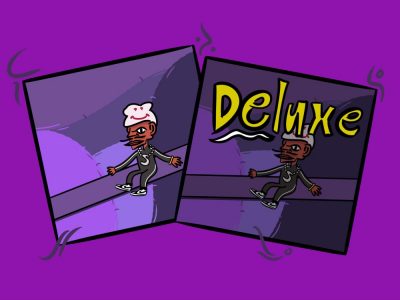“Deluxe” albums are typically re-released versions of albums, usually including new songs, live performances, acoustic versions and other bonuses. Some deluxe albums have new artwork, while others use the same artwork as the original release.
It’s not a new practice, nor does it seem to be dying anytime soon. Some people like them. Some people hate them. Some people just don’t care.

Andre Gee, a writer at Complex, said deluxe albums are major labels’ “latest attempt to drive up streams and ultimately Billboard relevance.” However, another Complex writer, Eric Skeleton, said that “flooding the market” with more music releases, like deluxe versions, can make an artist the topic of the moment and bring a lot of attention to them, which can lead to features or tours.
I fully understand why music labels keep putting them out. A new release, even if it’s mostly made up of songs previously released, will get a new burst of streams and exposure, bringing money and attention to labels. Additionally, it gives artists another chance to show their art to the world.
While I love getting more and more music from my favorite artists, having multiple versions of what is essentially the same album is frustrating and cluttered. Deluxe albums appear separately from original albums on streaming platforms, meaning the same songs exist in multiple places.
Aesthetically, in my opinion, it makes more sense to keep it simple.
Deluxe album versions also place songs on very different playing fields. The new tracks added in the release feel less authentic, like they are rejects or not up to par with the original tracks.
Also, deluxe albums typically come out several months after the initial release. For example, “folklore” by Taylor Swift was released on July 24, 2020, with the deluxe version following a month later, on Aug. 18, 2020.
With this schedule, fans will typically already be familiar with the songs from the initial release by the time new tracks are included. It’s exciting, but also frustrating to have a mix of new and old on one project.
Other deluxe versions come out on the same day as the original. For example, “1989” by Taylor Swift — one of my favorite albums of all time and a rare case where the deluxe tracks are some of the best on the project — came out on Oct. 27, 2014 along with the deluxe version.
This schedule puts the deluxe tracks on more of an even playing field, but begs the question — “why even release a deluxe version?”
At its core, an original album is a story, released that way for a reason. Deluxe tracks feel tacked haphazardly onto the end, rather than a continuation of that story.
I could be reading into these things way too deeply. Music, as with everything these days, is a business. Deluxe versions make more money, so it makes sense for labels to release them. But, the cluttering and unevenness of deluxe versions make it hard for me to fully give them my support. I’ll always love more music, but I also appreciate storytelling, and multiple versions make the story muddled and less authentic.

























































































































